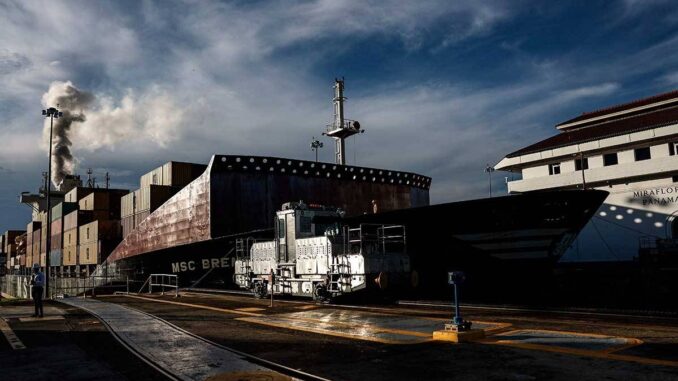
PANAMA CITY, Panama —Traffic in the Panama Canal fell by 29 percent over the past year due to a severe drought linked to climate change, the canal’s operator said late Tuesday.
The volume of cargo shipped through the canal, which links the Atlantic and Pacific oceans, was down by 17 percent in a year to 423 million tons, the canal authority of the Central American country added.
It did not release revenue figures for the year.
TRICKLE A cargo ship passes through the Miraflores locks on the Panama Canal on Oct. 7, 2024. The number of ships sailing through the Panama Canal fell by 29 percent last year, the Panama Canal Authority reported on Oct. 15, 2024. AFP PHOTO
Unlike the Suez Canal, the Panama Canal is a freshwater canal fed by two reservoirs.
Last year, the region was hit by the worst drought in decades, partly fueled by the ocean-warming El Niño phenomenon, causing the levels of the reservoirs to fall.
Faced with the water shortage, the canal authority cut the number of ships that could cross each day from 38 to 22.
The situation has eased since the start of the rainy season in May.
An estimated 5 percent of global maritime traffic passes through the Panama Canal, which was built by the United States between 1904 and 1914 to allow ships traveling between Asia and the east coast of the United States avoid the long, hazardous route around the southern tip of South America.
The main users of the passage are China, Japan, South Korea and the United States.
The canal authority expects business to recover in 2025.
It has forecast record revenues of $5.62 billion for the coming year, based on 13,900 ships carrying 520 million tons of goods.


Be the first to comment